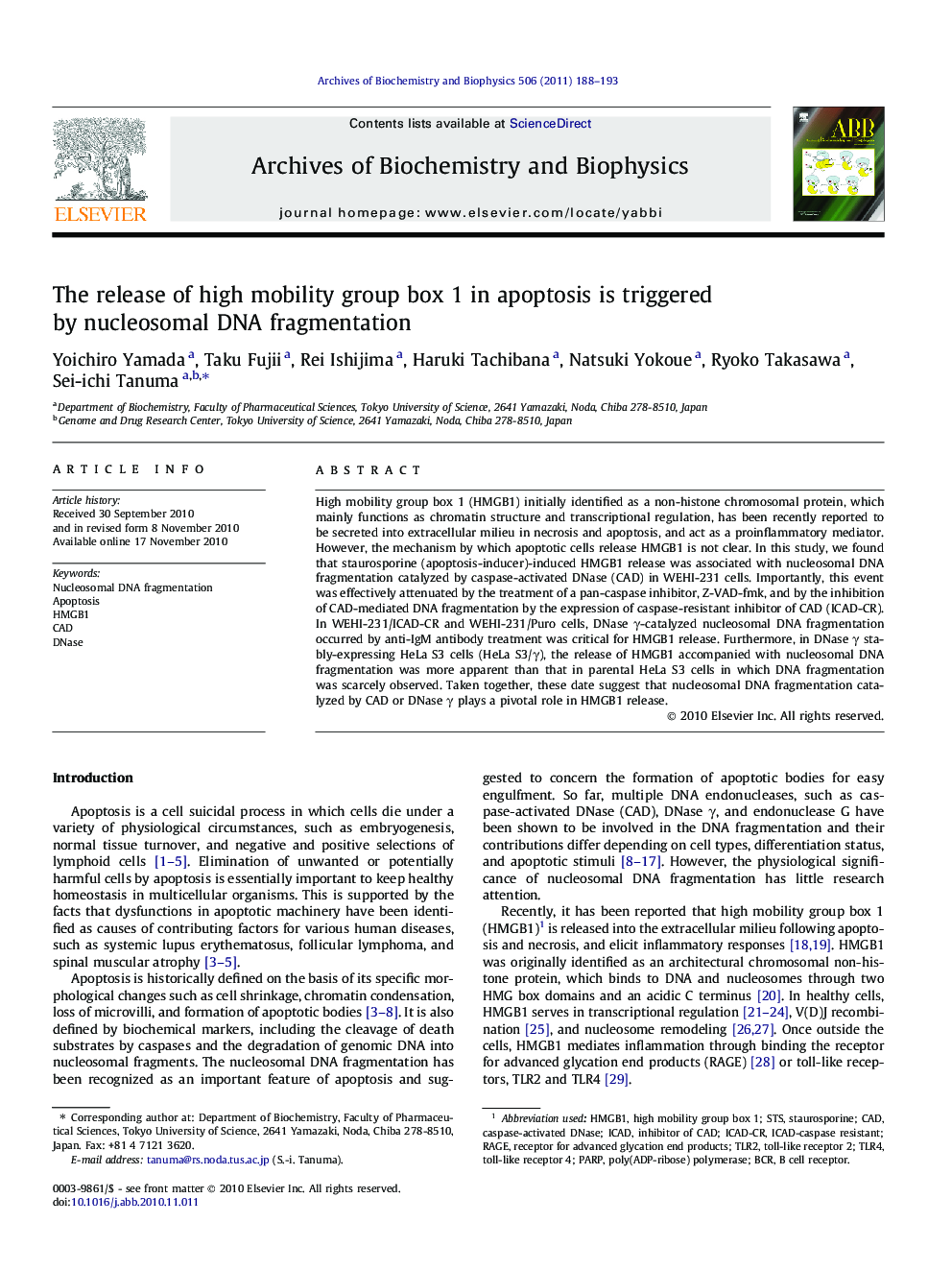| Article ID | Journal | Published Year | Pages | File Type |
|---|---|---|---|---|
| 1925796 | Archives of Biochemistry and Biophysics | 2011 | 6 Pages |
High mobility group box 1 (HMGB1) initially identified as a non-histone chromosomal protein, which mainly functions as chromatin structure and transcriptional regulation, has been recently reported to be secreted into extracellular milieu in necrosis and apoptosis, and act as a proinflammatory mediator. However, the mechanism by which apoptotic cells release HMGB1 is not clear. In this study, we found that staurosporine (apoptosis-inducer)-induced HMGB1 release was associated with nucleosomal DNA fragmentation catalyzed by caspase-activated DNase (CAD) in WEHI-231 cells. Importantly, this event was effectively attenuated by the treatment of a pan-caspase inhibitor, Z-VAD-fmk, and by the inhibition of CAD-mediated DNA fragmentation by the expression of caspase-resistant inhibitor of CAD (ICAD-CR). In WEHI-231/ICAD-CR and WEHI-231/Puro cells, DNase γ-catalyzed nucleosomal DNA fragmentation occurred by anti-IgM antibody treatment was critical for HMGB1 release. Furthermore, in DNase γ stably-expressing HeLa S3 cells (HeLa S3/γ), the release of HMGB1 accompanied with nucleosomal DNA fragmentation was more apparent than that in parental HeLa S3 cells in which DNA fragmentation was scarcely observed. Taken together, these date suggest that nucleosomal DNA fragmentation catalyzed by CAD or DNase γ plays a pivotal role in HMGB1 release.
Research highlights► HMGB1 is secreted into the extracellular milieu in apoptosis. ► HMGB1 release is dependent on nucleosomal DNA fragmentation catalyzed by CAD. ► HMGB1 release is triggered by DNase γ-mediated DNA fragmentation.
